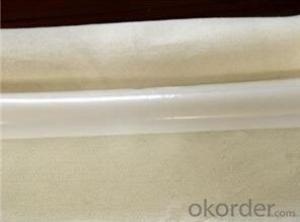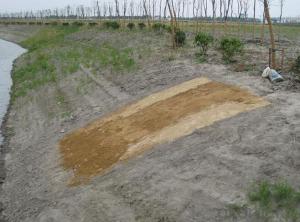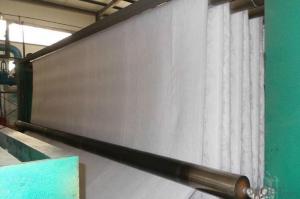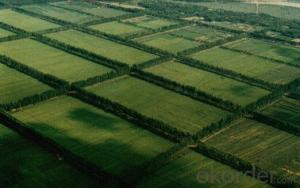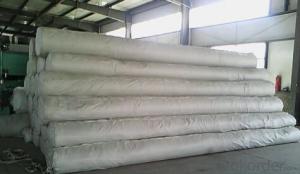Nutrition Geotextile Geomembrane Factory Supply Direct
- Loading Port:
- Qingdao
- Payment Terms:
- TT OR LC
- Min Order Qty:
- 5000 m²
- Supply Capability:
- 2000000 m²/month
OKorder Service Pledge
OKorder Financial Service
You Might Also Like
Nutrition geotextile in water environmental engineering .
Specification:
Geotextile has excellent permeability, acquired, durability, which can be widely used in railway ,highway, movement hall,Dams,hydraulic structures hence hole, coastal shoal, reclamation,environmental protection and other projects. The main products are Synthetic staple fibers needle punched nonwoven geotextiles and split film yarn woven geotextiles.
Product Feature:
1. Simple and fast construction
2. Achieve the greening effect quickly after construction
3. Due to the grass and composite fiber fabrics become into one integration, so it has the ability of certain degree of flow resistance for the water rising before the grass survive.
4. Composite fiber fabric is a continuous structure from slope top to slope toe, both ends are fixed, has high water flow resistance.
Technical Specification
5.0 m length and 1.05 m width. Reverse side all used filter material. Grass seeds: Bermuda grass (warm season grass), Bahia grass (warm season grass), Kentucky bluegrass (cold season grass), Tall fescue grass (cold season grass), Red fescue grass (cold season grass). Plant height: 0.1 ~ 0.5 m.
| NO. | Items | Specification | Notes | |||
| 1 | Total unit area weight g/sq.m | ≥380 | ||||
| 2 | dimension | width m | 1.0~2.0 | |||
| length m | as per user’s request | |||||
| 3 | Composite fiber fabrics | Material | Polyester Fiber | High strength PET | ||
| Unit area weight g/sq.m | ≥160 | |||||
| Mesh dimension mm | 8×8 | |||||
| Extension strengh kn/m | ≥11 | MD & CD | ||||
| 4 | Filtra layer | Material | Polyester non woven geotextile | |||
| Unit area weight g/sq.m | ≥40 | |||||
| 5 | Grass seeds, Fertilizer | Type | According to actual situation choose 3~5 grass seeds | |||
| Plant height m | 0.1~0.3 | |||||
| 6 | Fiber layer | Material | wood pulp cellulose | |||
| Unit areaweight g/sq.m | ≥15 | |||||
| 7 | flow resistance | ≥4 | not allow appear scour, suction and blanket turn-over etc. damage phenomenon | |||
| M/s | ||||||
| 8 | Anti-UV strengh conservation rate % | 65~80 | 3000hrs Continuously exposure 3000hrs | |||
| 9 | Supporting spare parts | ABS fastening nail | Material | ABS Resin | Fixed between two blankets by length direction | |
| Fiber diameter mm | 35 | |||||
| Nail length mm | 325 | |||||
| Lnail | Material | Steel wire (content 10% zinc-aluminium alloy) | Used to fix single blanket | |||
| Fiber diameter mm | 4 | |||||
| Nail length mm | 200 | |||||
| ABS connecting nail | Material | ABS Resin | Used in the slope between the two blankets ( width direction) | |||
| Nail length mm | 38 | |||||
| Connecting fiber | Material | High strength Polypropylene | Used in the slope between the two blankets ( width direction) | |||
| Length mm | Cut as per request | |||||
APPLICATION:
Generally laid on the river channel, slope protection etc. slope revetment projects, to control the water erosion, soil loss, meantime can reach the effect of slope ecological restoration and landscape greening, making river back to natural.
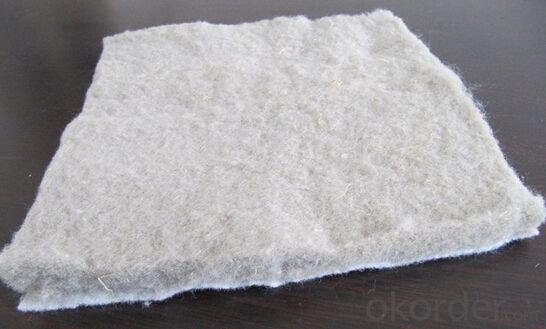

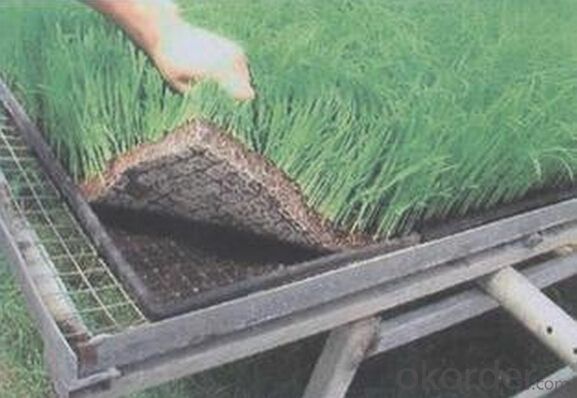

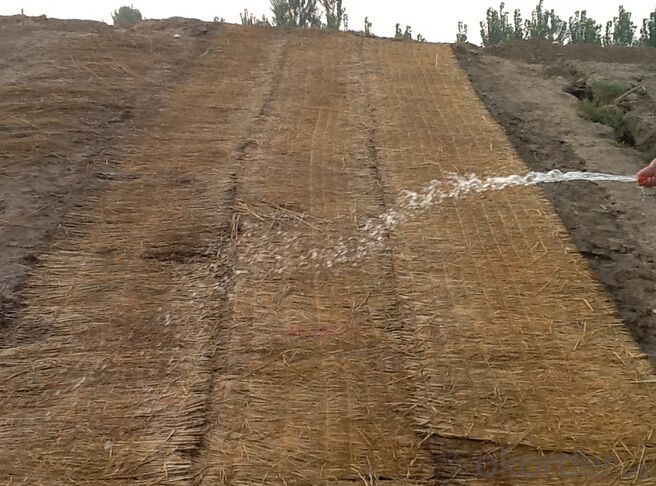
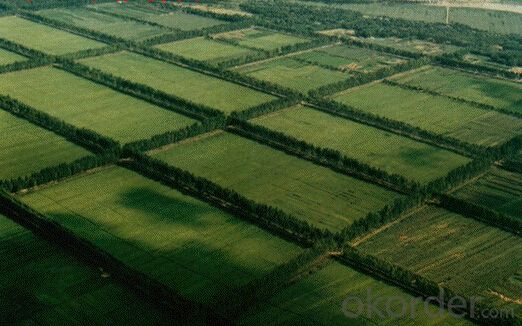
- Q:Polypropylene geotextile and polyester geotextile with the naked eye how to distinguish
- Polypropylene compared to white, polypropylene fiber than polyester fiber density point, anti-aging anti-aging of polypropylene, polyester aging,
- Q:Can geotextiles be used in railway projects?
- Yes, geotextiles can be used in railway projects. Geotextiles are commonly utilized in railway construction and maintenance for various applications such as separation, filtration, drainage, and reinforcement. They can help improve the stability, strength, and longevity of railway tracks, reduce maintenance costs, and enhance overall performance.
- Q:Application standard of filament geotextile
- National standard for filament geotextiles GB / T-1998 Geosynthetics Filament anti - sticking acupuncture non - woven geotextiles, the latest standard GB / T - 2008.
- Q:How do geotextiles help with soil separation in railway ballast systems?
- Geotextiles help with soil separation in railway ballast systems by acting as a barrier between the ballast and the underlying soil. They prevent the mixing of fine particles from the soil with the ballast, which can lead to the degradation of ballast and decrease its load-bearing capacity. Geotextiles also provide filtration, allowing water to drain freely while retaining the ballast material, thereby maintaining stability and preventing the loss of ballast particles.
- Q:Artificial lake can not do geotextile waterproofing? What method can not do geotextile waterproof?
- Artificial lake with geotextiles do waterproof? Artificial lake to the bottom of the water leakage. The lake design in the use of geotextile, it is not anti-seepage, it should be used for filtering. There is no use of course there will be different results. If the design has that use. If the lake is to prevent water leakage, there are many ways. 1. Laying a professional anti-seepage geomembrane, composite geomembrane; 2. Laying a layer of sticky heavier little permeability of the clay, pressure solid. 3. There are also laying a layer of geology known as GCL geosynthetics, full name is bentonite waterproof blanket. Geotextile is water seepage, the general is not anti-seepage, can be used to filter. Only in the geotextile composite anti-seepage film to prevent seepage, and composite film after the geotextile has not called geotextile, and should be called composite geomembrane. But because of habitual problems, and now there are people called the seepage geotextile.
- Q:Can geotextiles be used for reinforcement of earthen dams?
- Yes, geotextiles can be used for the reinforcement of earthen dams. Geotextiles are commonly employed in dam construction projects to enhance the stability, strength, and erosion resistance of earthen embankments. They act as a barrier, preventing the loss of soil particles while still allowing for water drainage, thereby improving the overall performance and longevity of the dam.
- Q:What are the advantages of using geotextiles in groundwater protection systems?
- Geotextiles offer numerous advantages in groundwater protection systems. Firstly, they act as a reliable barrier against soil erosion, preventing sedimentation and contamination of groundwater sources. Secondly, geotextiles provide effective filtration, allowing water to pass through while preventing the movement of fine particles and pollutants. Additionally, these materials enhance the stability of soil and provide reinforcement, reducing the risk of structural failures in groundwater protection systems. Lastly, geotextiles are durable, cost-effective, and easy to install, making them a practical choice for long-term groundwater protection.
- Q:How do geotextiles contribute to soil drainage?
- Geotextiles contribute to soil drainage by allowing water to pass through them while preventing soil particles from being washed away, thus promoting efficient water flow and preventing soil erosion.
- Q:The amount of geotextile drainage of the drainage pipe, as well as the amount of gravel block ye count
- Calculate the surface area of the water pipe, and then add a 10% of the amount, is the amount of geotextile, Huazhi geotextile material manufacturers to answer
- Q:What is the difference in role of earth anchors and geotextiles in the construction of retaining wall?
- Geotextiles prevent the infiltration of the natural, insitu soil into sand or structural gravel that you may place as a foundation to the retaining wall. You can think of it as a membrane that keeps the two types of material of different densities, from gradually mixing together. A free standing retaining wall will likely not be successful as the pressure of the retained soil behind the wall will build up due to settlement, and eventually cause the wall to topple. Earth anchors that tie into the wall and extend into the backfill material (retained earth) serves to support the wall and keep it from failing.
1. Manufacturer Overview |
|
|---|---|
| Location | |
| Year Established | |
| Annual Output Value | |
| Main Markets | |
| Company Certifications | |
2. Manufacturer Certificates |
|
|---|---|
| a) Certification Name | |
| Range | |
| Reference | |
| Validity Period | |
3. Manufacturer Capability |
|
|---|---|
| a)Trade Capacity | |
| Nearest Port | |
| Export Percentage | |
| No.of Employees in Trade Department | |
| Language Spoken: | |
| b)Factory Information | |
| Factory Size: | |
| No. of Production Lines | |
| Contract Manufacturing | |
| Product Price Range | |
Send your message to us
Nutrition Geotextile Geomembrane Factory Supply Direct
- Loading Port:
- Qingdao
- Payment Terms:
- TT OR LC
- Min Order Qty:
- 5000 m²
- Supply Capability:
- 2000000 m²/month
OKorder Service Pledge
OKorder Financial Service
Similar products
New products
Hot products
Hot Searches
Related keywords
